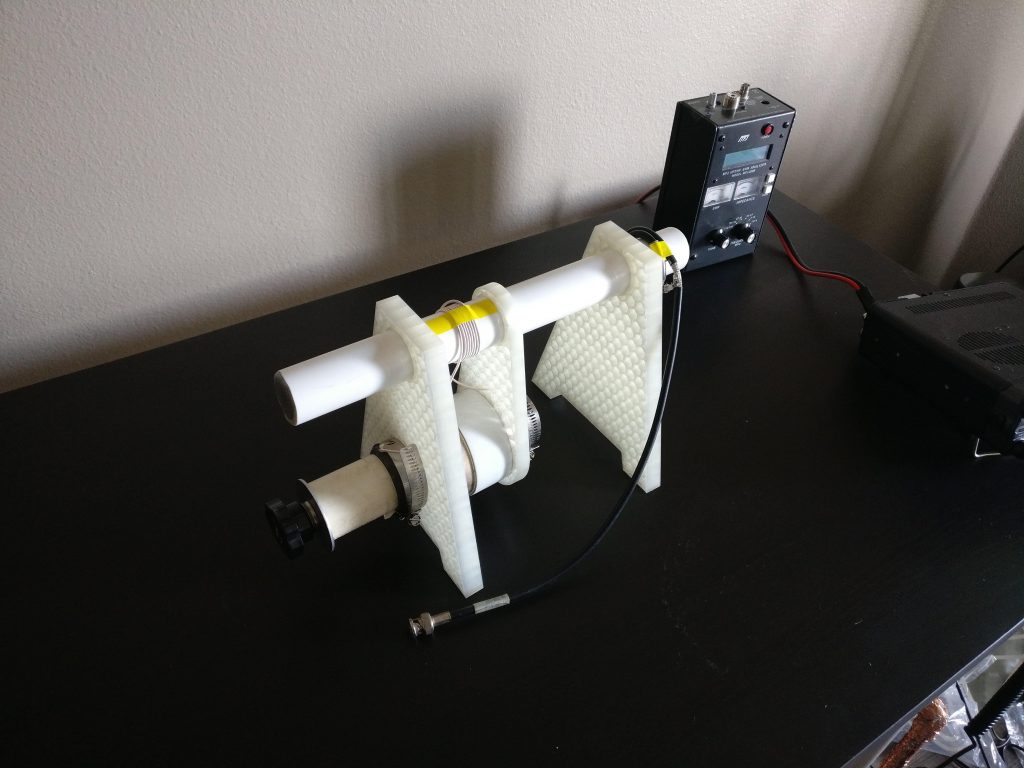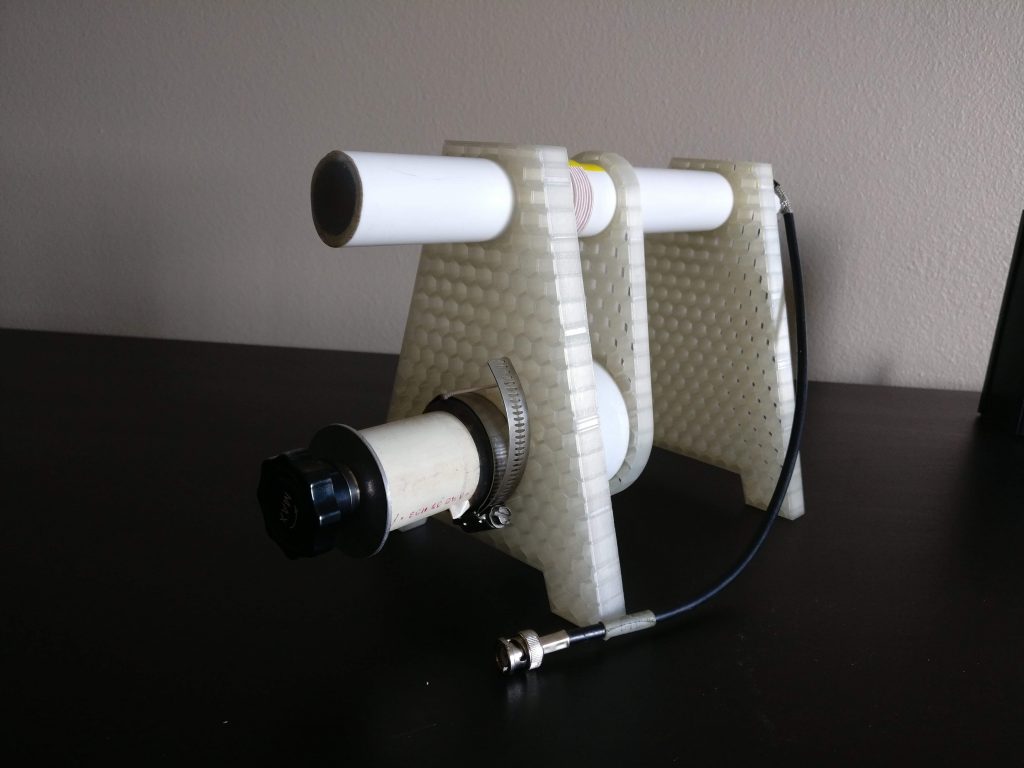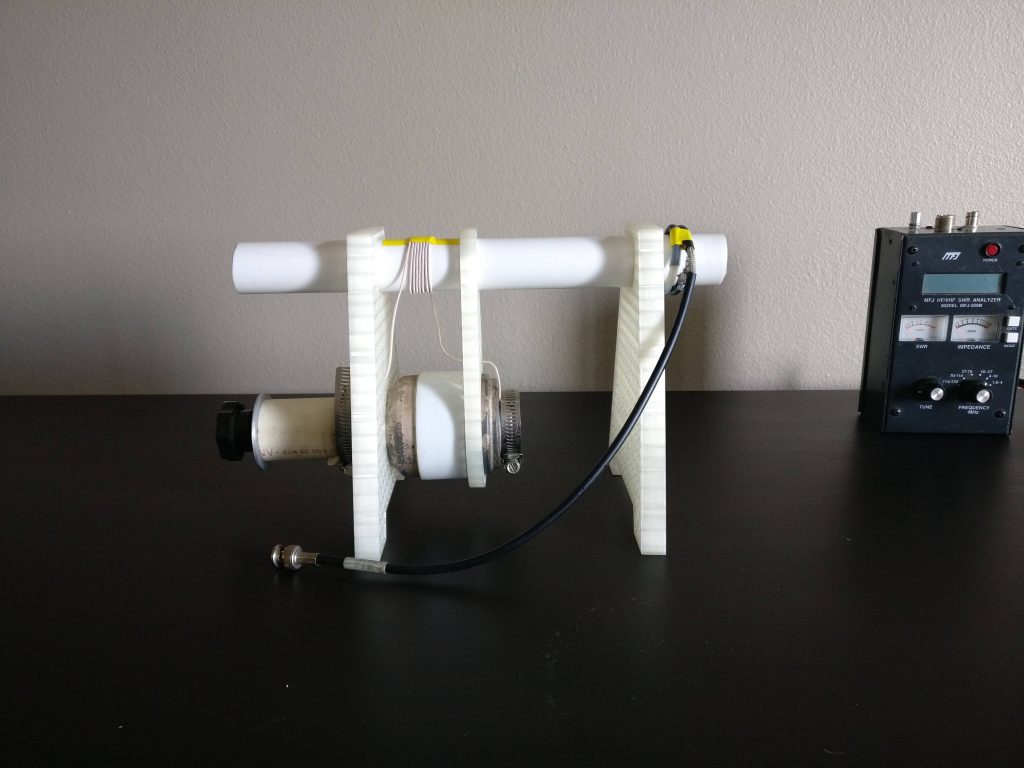With the current popularity of air core magnetic loop antennas in amateur radio, I thought it would be nice to build another uncommon type. Instead of having a large loop with air in the middle (or core) of the antenna, this antenna uses a ferrite, not entirely dissimilar to those clips that come on USB cables, as a way to minimize physical size while maximizing the RF energy that flows through it.
The ARRL’s Antenna Book mentions this style of antenna, but only gives about a paragraph and references to the “Antenna Compendium Volume 1” and a reference to DeMaw’s text “Ferromagnetic-Core Design & Application Handbook”
Online, Ferrite Rod Antenna information is mostly about receive-only antennas, both for direction finding and shortwave listening. This particular antenna’s trick, thanks to the sizable ferrite, is the ability to transmit.




Granted it is only capable of handling about 20 watts, for a portable QRP rig it is pretty great. Especially with digital modes. Not to mention, that like a normal air core magnetic loop, it has great e-field noise rejection for urban environments.
With the capacitor I have and 10 turns on the LC tank circuit, it is able to tune from below 1.8 MHz up to 17 MHz. Tuning is an experience. When turning the knob, the human body de-tunes the whole circuit, so one has to adjust, move away and check, adjust, move away and check, repeat… Since it has such a high Q, there will be a lot of repeats getting it center on where you want it.
As for the parts it is fairly simple.
- The ferrite rod itself.
- This one is from a custom batch a friend of mine commissioned about a dozen years ago. (If interested, I recommend Stormwise Ferrite Rods, no affiliation, I’ve just had good luck with their products on several other projects, including a stack of rods for transmitting 100W)
- A Vacuum Variable Capacitor
- This one is a used Jennings 7-1000pF that only gets down to about 80pF
- Wire for completing the LC Tank Circuit
- I used some cheap Litz wire from eBay I had laying around. Its effects at this frequency aren’t as important, but with how soft it is it coils well.
- Coax or wire for the ‘primary’ winding
- I used a two turn Faraday coupler. Two turns because it gave me a 50 ohm match. A BNC to banana post adapter could work in a pinch too (and what I started with…)
- Structure to hold it all together
- I 3D printed some quick shapes with undyed filament, because plastics make it possible
Be First to Comment